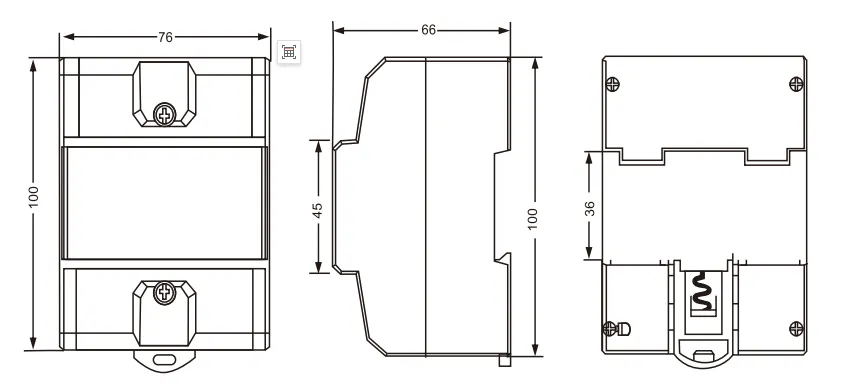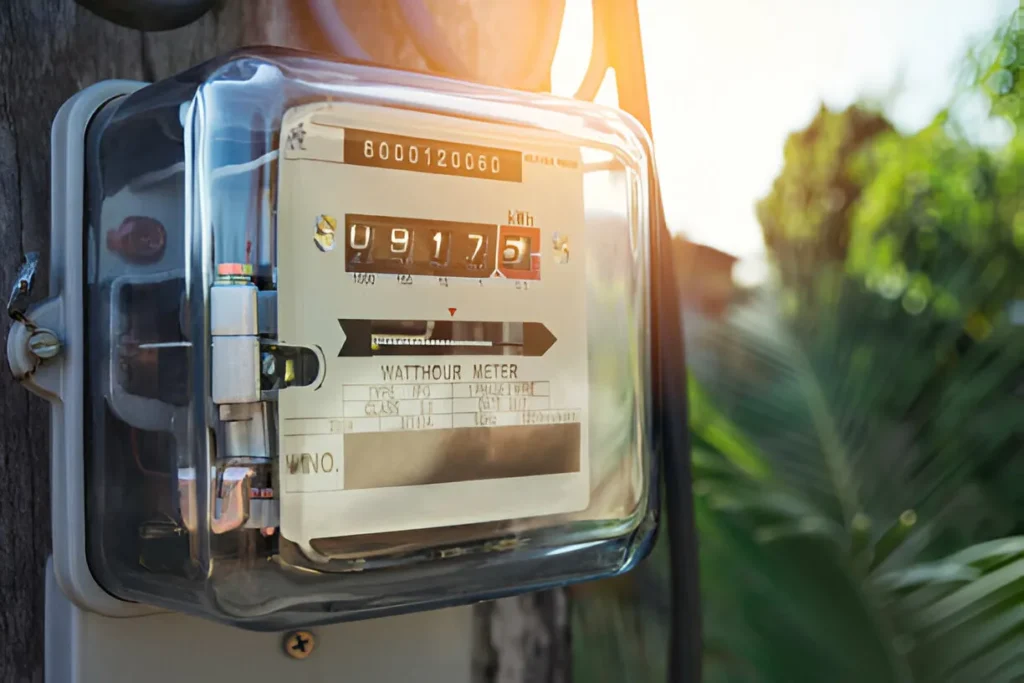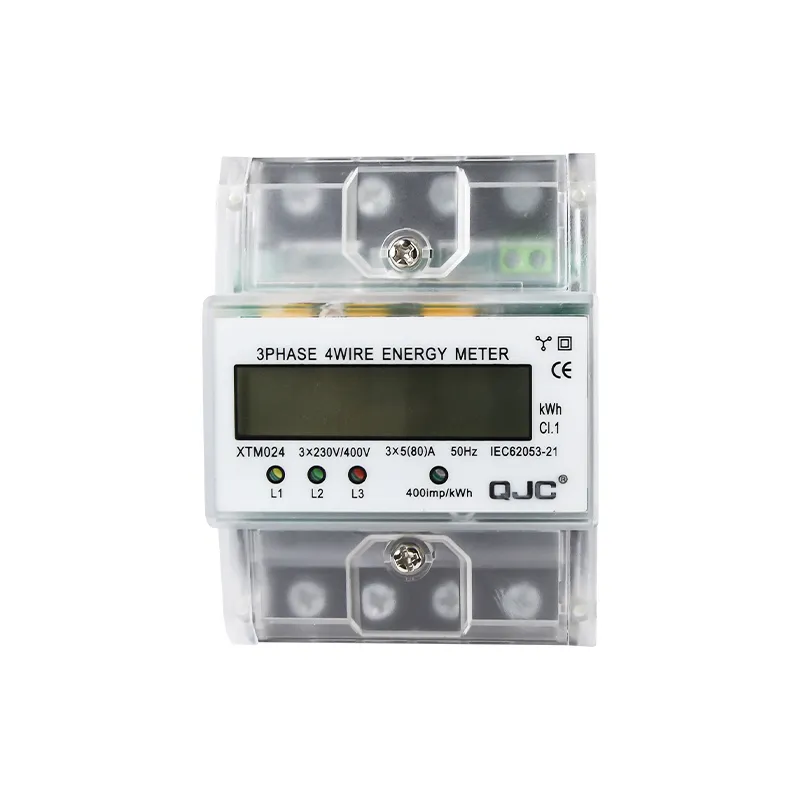Three-phase energy me ters are essential devices for measuring electricity consumption in industrial and commercial settings. This article explores their key features and applications.
Definition of three-phase energy meter
A three-phase energy meter is a meter used to measure three-phase AC power consumption. It calculates the total active power and energy consumption by simultaneously measuring the voltage and current of each phase in the three-phase circuit.
Three-phase energy meters are mainly used in industrial facilities, large commercial areas and some residences. They can accurately measure power consumption and provide users with detailed power consumption data.
How to choose a three-phase energy meter?
There are several factors to consider when choosing a three-phase energy meter:
- Grid type: Single-phase or three-phase installation. Make sure the selected meter is suitable for your electrical installation.
- Voltage type: Make sure the selected meter is suitable for the voltage of your electrical installation.
- Current rating (A): Make sure the meter has sufficient measurement capabilities. Check the rated current and short-circuit current of the meter to make sure it is suitable for your needs.
- Functionality: Check energy counting options, communication options, monitoring functions, and electrical safety options.
- User interface: Check data visualization options (modular mounting, back of cabinet or door mounting), configuration options, and communication options to make sure they are suitable for the installation.
- Certification: If a meter that complies with the Measuring Instruments Directive is required for billing purposes, choose a meter that complies with the “MID” (Measuring Instruments Directive).
Measure and monitor three-phase power
Three-phase energy meters can calculate the total active power and energy consumption by measuring the voltage and current of each phase in the three-phase circuit.
Some advanced three-phase energy meters also have data recording and transmission functions, which can record and transmit measurement data to a remote monitoring system. This data can be used to optimize energy use, identify bottlenecks and reduce energy costs.
What is the maximum load of a three-phase energy meter?
The maximum current (Imax) of a three-phase energy meter is the highest current that the meter can carry continuously and remain safe, and at this current the meter should meet the accuracy requirements of the relevant standards.
The disconnect switches, terminals and other components inside the meter have a certain safety margin based on the maximum current marked on the nameplate.
Any electrician will rely on the information printed on the meter to select wire size and protective fuses. Higher currents will reduce the manufacturer’s safety margin, so the specifications should be adhered to.
What are the advantages of a three-phase energy meter?
Three-phase systems offer the following advantages over single-phase systems:
- Higher power capacity: Three-phase systems have higher power capacity than single-phase systems, making them more popular in large industrial facilities and commercial areas.
- Balanced energy distribution: Three-phase systems provide a more balanced energy distribution, which provides a more stable energy source.
- Efficiency: Three-phase meters enable efficient energy management by accurately measuring energy consumption.
- Industrial use: Three-phase systems are well suited to meet the high energy consumption needs of industrial facilities.
How to connect an energy meter?、
Direct energy meters have built-in current transformers (CTs), so no accessories are needed. Simply connect the line for each phase to a protective device (circuit breaker or fuse) downstream of the meter, and then connect the device to the meter.
For three-phase four-wire power supply, all three phases and the neutral wire need to be connected to the meter. For three-phase three-wire power supply, since there is no neutral wire, the meter that requires a neutral wire cannot be used.

What is the service life of an energy meter?
The energy meter is generally designed to have a service life of 10-20 years. However, the actual service life depends on many factors, such as working environment, maintenance, etc.
Regular inspection, calibration and maintenance can help extend the service life of the energy meter and ensure its measurement accuracy.
What are the units of an energy meter?
The main parameters measured by the energy meter include:
- Active power: in kilowatts (kW)
- Active energy: in kilowatt-hours (kWh)
- Apparent power: in kilovolt-amperes (kVA)
- Apparent energy: in kilovolt-ampere-hours (kVAh)
- Reactive power: in kilovars (kVAR)
- Reactive energy: in kilovar-hours (kVARh)
- Power factor: dimensionless
The energy meter calculates the above parameters by measuring voltage (in volts V) and current (in amperes A). The reading of the energy meter usually shows the total active energy consumption in kilowatt-hours (kWh).
FAQs
Q1: How to read the reading of a three-phase energy meter?
A: Most three-phase energy meters have an LCD display that can cycle through various parameters such as total active energy, voltage and current per phase, etc. Some energy meters are also equipped with a communication interface that can read data remotely. When reading, you need to multiply by the meter’s multiplier, which is usually marked on the nameplate.
Q2: How often does the energy meter need to be calibrated?
A: In order to ensure accurate measurement, the energy meter needs to be calibrated regularly. The calibration cycle depends on local regulations and the use environment, generally 4 to 8 years. For high-voltage or high-current energy meters, it is recommended to shorten the calibration cycle. Calibration must be performed by a qualified organization.
Q3: What is the accuracy of a three-phase energy meter?
A: The accuracy of a three-phase energy meter is usually between 0.5 and 2.0, depending on the model and application scenario. High-precision meters (such as 0.2) are mainly used in the fields of metering and energy management.
Q4: What is the difference between a three-phase energy meter and a single-phase energy meter?
A: A three-phase energy meter is used to measure energy consumption in a three-phase AC circuit, while a single-phase energy meter is used for a single-phase circuit. A three-phase energy meter measures the voltage and current of each phase in a three-phase circuit at the same time, while a single-phase energy meter only measures one phase. Three-phase energy meters are suitable for industrial facilities and large commercial areas, while single-phase energy meters are mainly used in ordinary residences.
Q5: How to connect a three-phase energy meter?
A: For a three-phase four-wire power supply, both the three-phase and neutral wires need to be connected to the meter. For a three-phase three-wire power supply, since there is no neutral wire, only the three-phase wire needs to be connected. The specific connection method should follow the meter manual and the requirements of the local power department.

